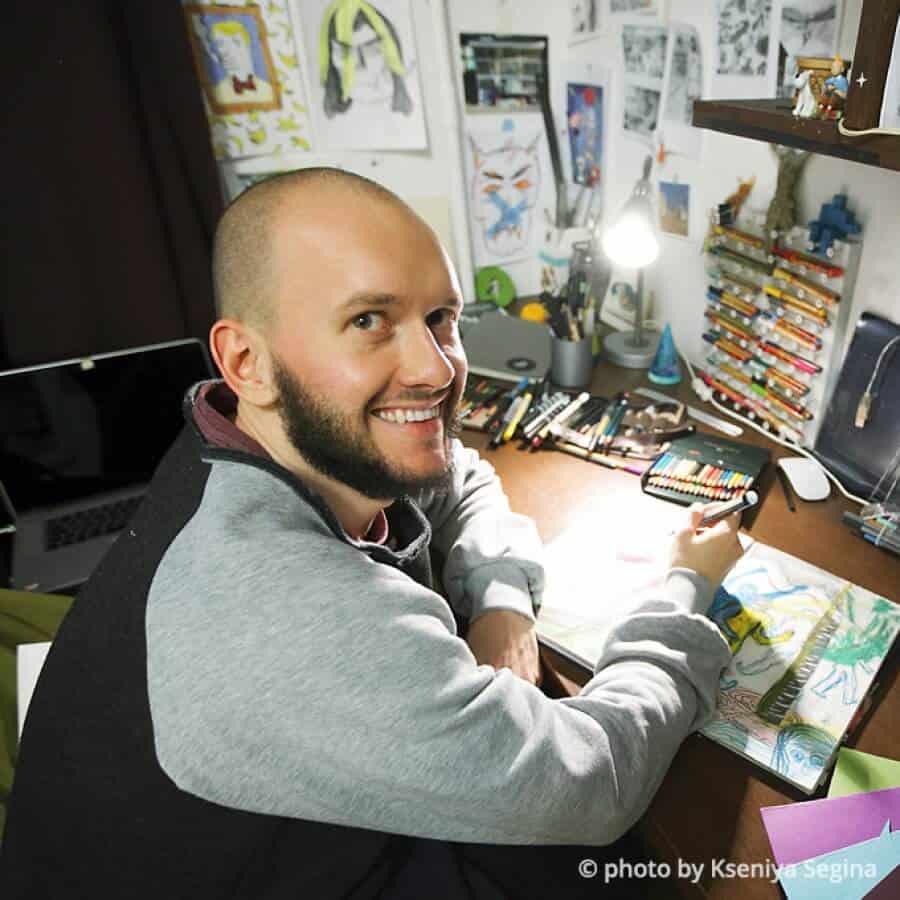Andrey Petranin is an illustrator from Moscow who wasn't afraid to turn his childhood dream into reality, and to transform a common hobby into his profession. At the present time his pencil drawings with a humorous undertone are telling us the most incredible stories, depicting unreal creatures and ludicrous situations.
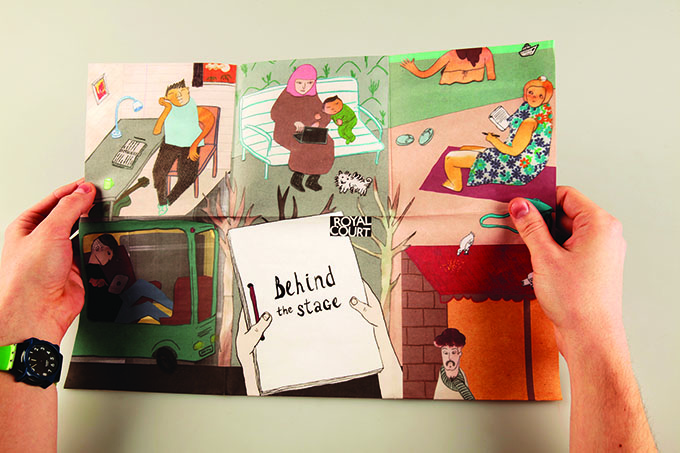
Andrey Petranin – Ilustrace
© andreypetranin.com/
Andrey, tell us, how did you become an illustrator?
My formal education was in the legal field. I finished my studies, got the diploma, and then realized that I definitely didn’t want to and wouldn’t be pursuing this profession. The question arose regarding what to do next. And then I remembered that back in my school days I was constantly drawing something, though no one took it seriously. That is why my parents insisted that I should get a more serious education. So, I wanted to get back to it, and certainly felt scared and confused. My first step was in graphic design, a safer and more practical occupation, as it seemed to me at the time. I learned on my own how to work with the basic graphics programs and found my first job at a design studio.
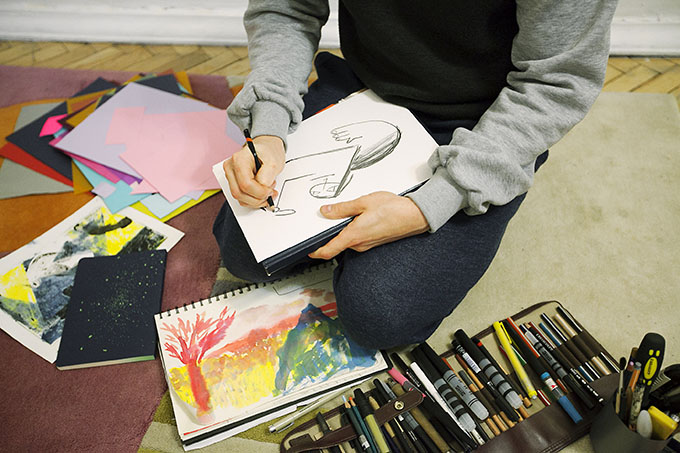
Andrey Petranin – Ilustrace
© photo by Kseniya Segina
How did you manage to get a job without any experience or education?
I honestly admitted that my educational background wasn’t associated with design, but I possessed a basic working knowledge of graphic editors. I was eager to work and ready to do anything. I needed the experience, and it was absolutely of no importance to me how much money I would make by doing this thing. I was doing my job and watching other designers work, learning from them. During my first year at the design studio I absorbed everything that was going on around me. At the same time I took an interest in modern illustration, and was constantly browsing through thematic web sites and purchasing books. One of my friends told me that there was a graphic illustration course at The British Higher School of Design. So I signed on for that very course for three years.
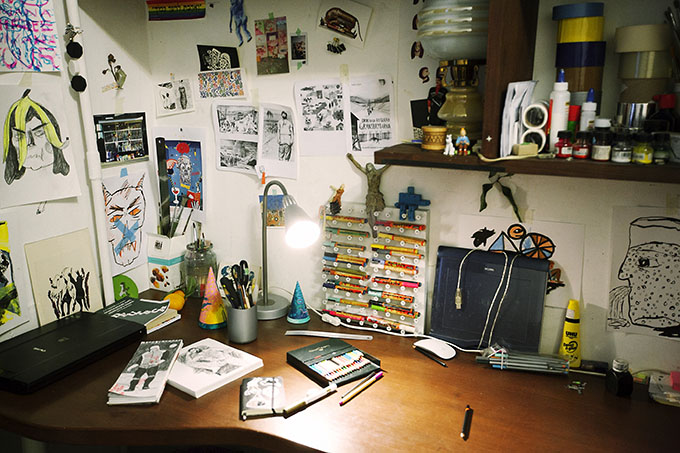
Andrey Petranin – Ilustrace
© photo by Kseniya Segina
Did you manage to combine your work as an illustrator with your studies?
We had “live projects” at my college, which involved companies that gave us briefings. We had to complete them before a certain deadline, and afterwards a company chose with whom it would like to cooperate. Apart from that, I continued to participate in various contests for designers and young illustrators. For instance, that was the way I got the chance to draw an animated commercial for a certain bank.
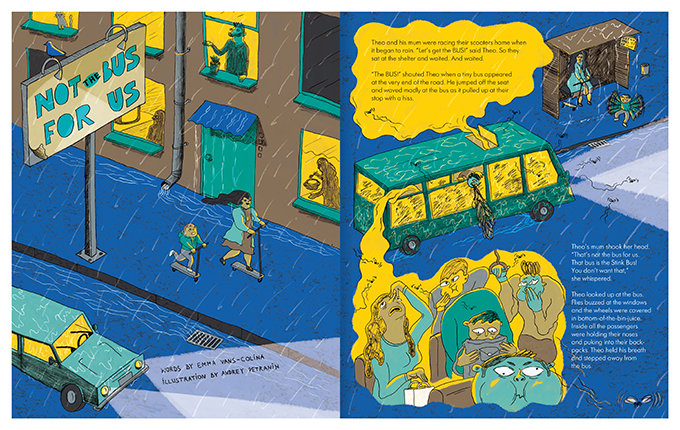
Andrey Petranin – Ilustrace
© andreypetranin.com/
In your opinion, where should young illustrators be looking for job opportunities?
Unfortunately, there are almost no agencies in Russia that work with illustrators. And even where they are present here, they tend to cooperate with artists, who are making dull and old-fashioned drawings. The best way is to learn foreign languages and to be in constant contact with agencies, magazines, publishing houses, and online projects in Europe and the U.S. You should try sending your portfolio to selected companies, and there is a very high probability that you will get a job offer from somewhere.
What were the all-time favorite projects you have had the chance to work on?
I had a very interesting work order from an English magazine for children called Anorak, who asked me to produce some illustrations for a short story. They sent me a text and gave me a free hand. When I read the story, I realized that it was totally my cup of tea! It was wildly crazy, unreal, and surreal. Everything was just the way I like it. That’s why our cooperation was very smooth, without any corrections from their side.
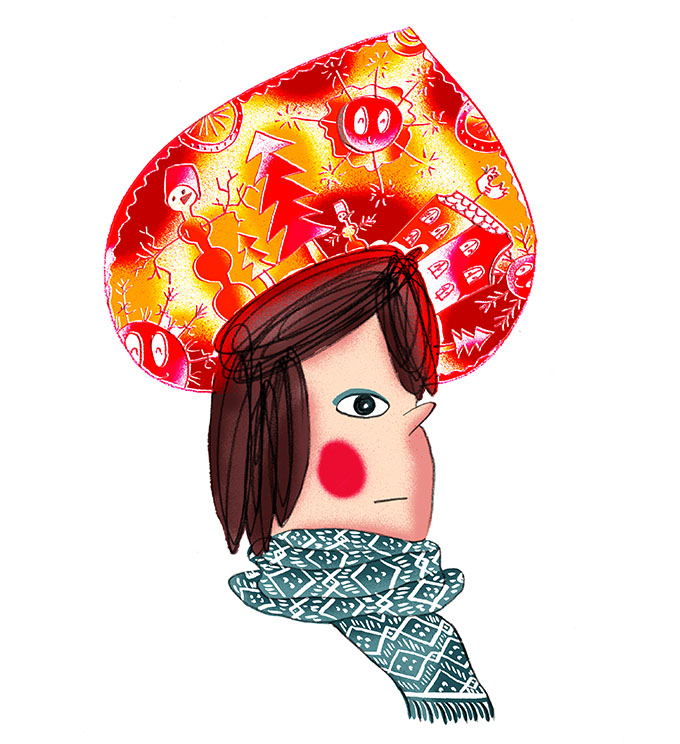
Andrey Petranin – Ilustrace
© andreypetranin.com/
What are you working on right now?
I, along with and several other illustrators, plan to publish a magazine of illustrated stories. Each of us will draw his part for every issue. It will be published, printed, and sold in Russia, as well as in Europe. After all, I really want everyone to know that there are talented contemporary Russian illustrators. We also have plans to take our magazine to European festivals of illustration. Such festivals always have markets where you can showcase and sell your publications.
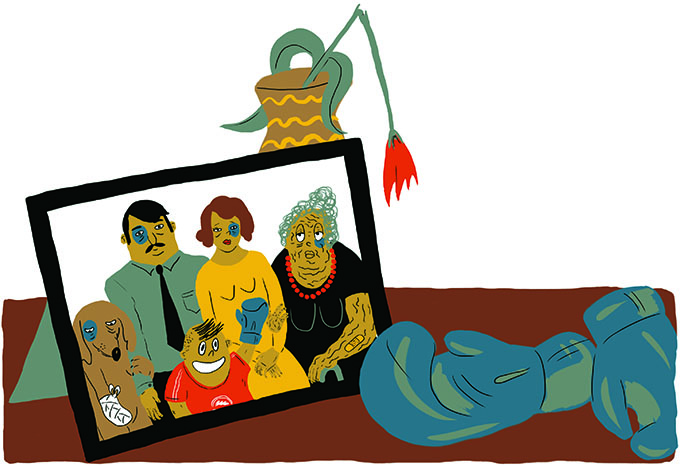
Andrey Petranin – Ilustrace
© andreypetranin.com/
Have you ever arranged your own exhibitions, and how useful are they for an illustrator?
We had a project called Illustration Breakfast. Every weekend other illustrators and I used to get together in the morning and just draw something. Then we came up with the idea to combine all the drawings we had made at these meetings, and to open an exhibition. We had a great opportunity to do it, because we had found an indoor space that was available for free for two days. It was a very useful experience, and on top of that, we got some feedback, and some of us got illustration jobs, others sold their drawings right at the exhibition.
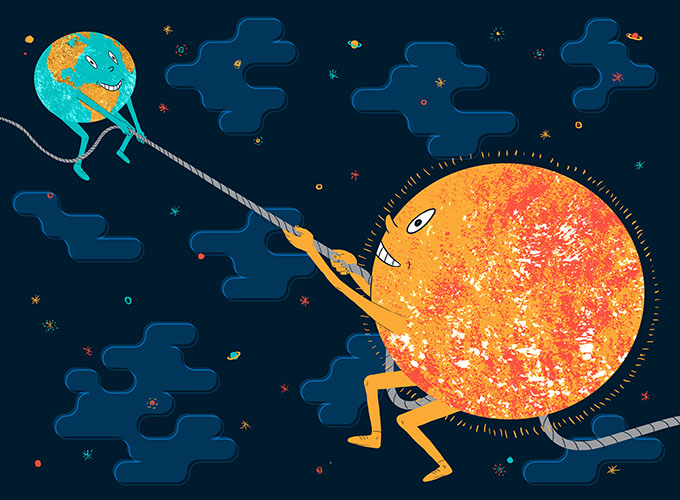
Andrey Petranin – Ilustrace
© andreypetranin.com/
I know that you are conducting drawing classes for children. Tell us more about it.
I teach art classes in a school of supplementary education, where children study the English language through a variety of subjects. So, I teach children from 5 to12 years of age using the program which was written by the brilliant Masha Schmidt. It is because of her that those children and I can study the most serious topics in the visual arts, from painting to sculpture, through fun exercises. For instance, we can cover all walls with giant sheets of paper and draw with different paints. Or we can make an installation on the ceiling using fishing lines and ropes on the topic of ropeways. I like it when children approach me with the question, “What are we going to do today?” Each one of them loves to draw. In fact, they inspire me with their ingenuousness and courage. Adults have psychological blockers, while everything is possible for children! They are able to come up with some unreal things in an instant!
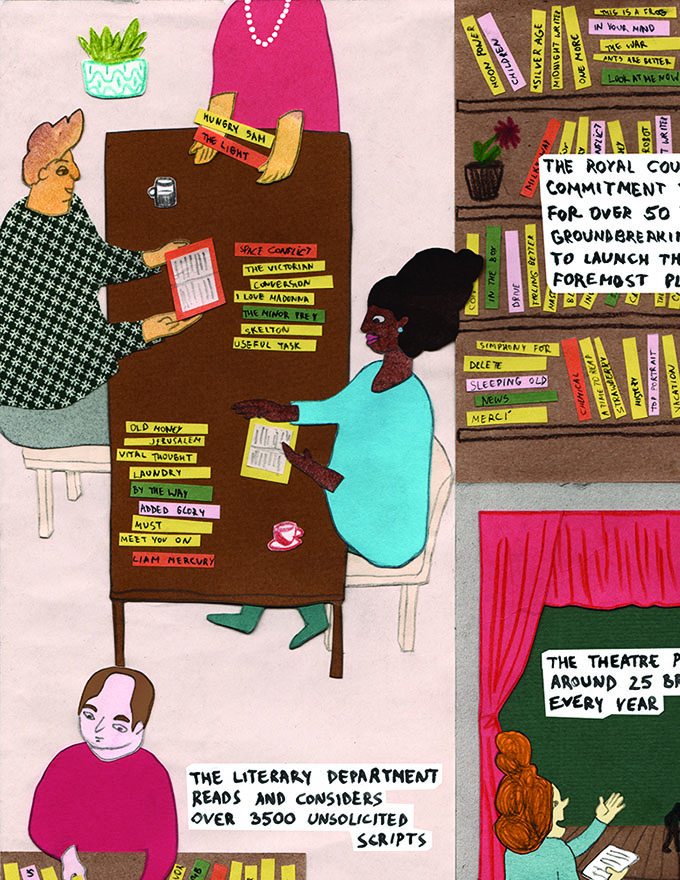
Andrey Petranin – Ilustrace
© andreypetranin.com/
Is it harder to teach a grown up how to draw?
I had a wonderful teacher, the illustrator Victor Melamed, who had a wonderful phrase: ”An illustrator doesn’t necessarily need to know how to paint!” An illustrator is a person who can show his attitude towards a certain text or event through drawing. If you are able to do it, even by drawing some abstract spots and circles, and at the same time the viewer understands and conceptualizes your message, then it is all right, it means that you may call yourself an illustrator.
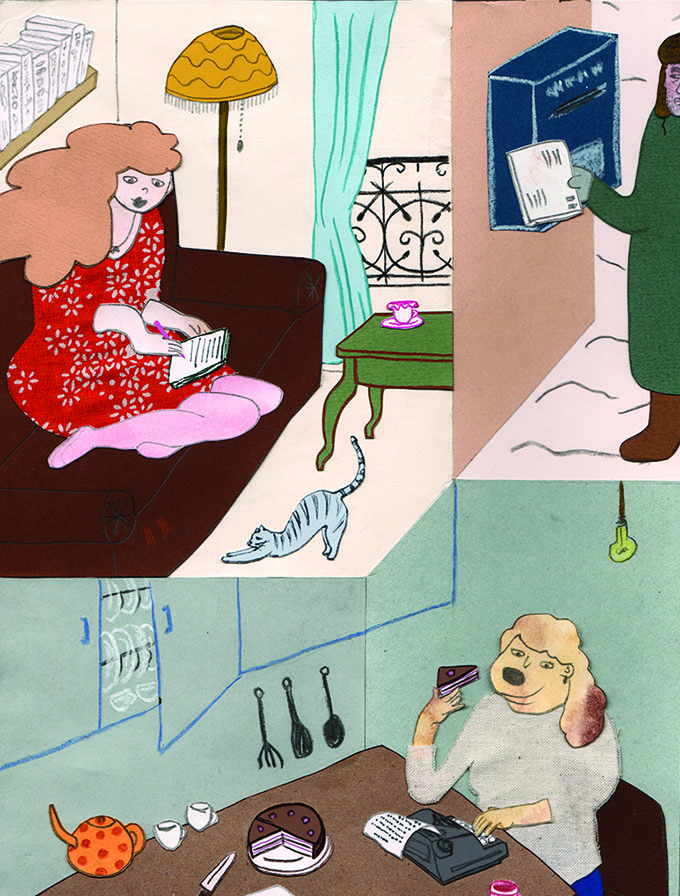
Andrey Petranin – Ilustrace
© andreypetranin.com/
Are there any peculiarities in the work of an illustrator in Russia?
The biggest problem of the Russian client is that he perceives you not as an artist with individual style, but rather as a tool. Those people are not interested in your working techniques; they don’t study your portfolio. It is more interesting for them to use you as a painter, who just knows how to draw and draws only what they want. And usually it is quite the opposite of what you normally do. I always ask such clients the same question, “Why did you choose me since you ask me to draw something radically different?” It doesn’t apply to startups because, on the contrary, they are usually more creative. Therefore, there is still hope that eventually the situation will change, and more educated clients will appear, who will choose an illustrator with the right style for the particular project.
What technique do you use in your drawings?
I’ve been studying at a rather experimental course, therefore I can and I love to do everything: ceramics, costumes, prints, silk screen printing, and animation. My favorite tool is a graphite pencil. After the drawing is ready, I scan it and correct any inaccuracies and colors using graphic editors.
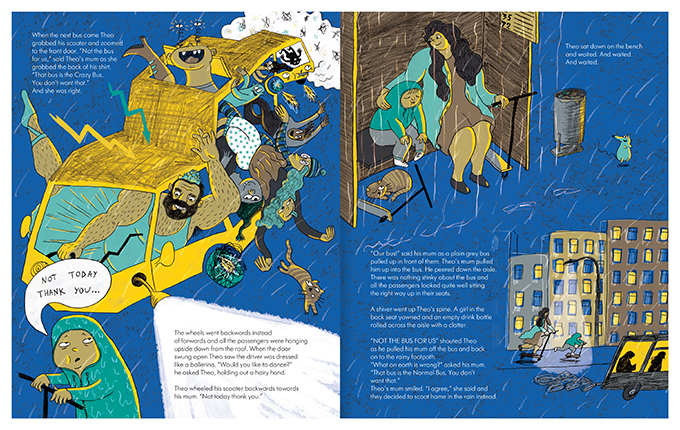
Andrey Petranin – Ilustrace
© andreypetranin.com/
How do you get inspired?
I often take long walks alone and just observe the people around me. Sometimes it is possible to pull out something useful and inspiring by overhearing other people’s conversations or by having a sneak peek at someone’s appearance. It is necessary to feed yourself constantly with additional emotions and impressions.
In your opinion, what are the things for which the young illustrator has to be prepared?
He has to brace himself for adult life because it will be very different from student years. I would recommend forging some business contacts while still in the final year of college. By that time students usually have a wide range of skills, so they may confidently send their portfolios, even not very voluminous ones, to magazines, publishing houses, and attractive projects.
Support us!
All your donations will be used to pay the magazine’s journalists and to support the ongoing costs of maintaining the site.
Share this post
Interested in co-operating with us?
We are open to co-operation from writers and businesses alike. You can reach us on our email at [email protected]/[email protected] and we will get back to you as quick as we can.
